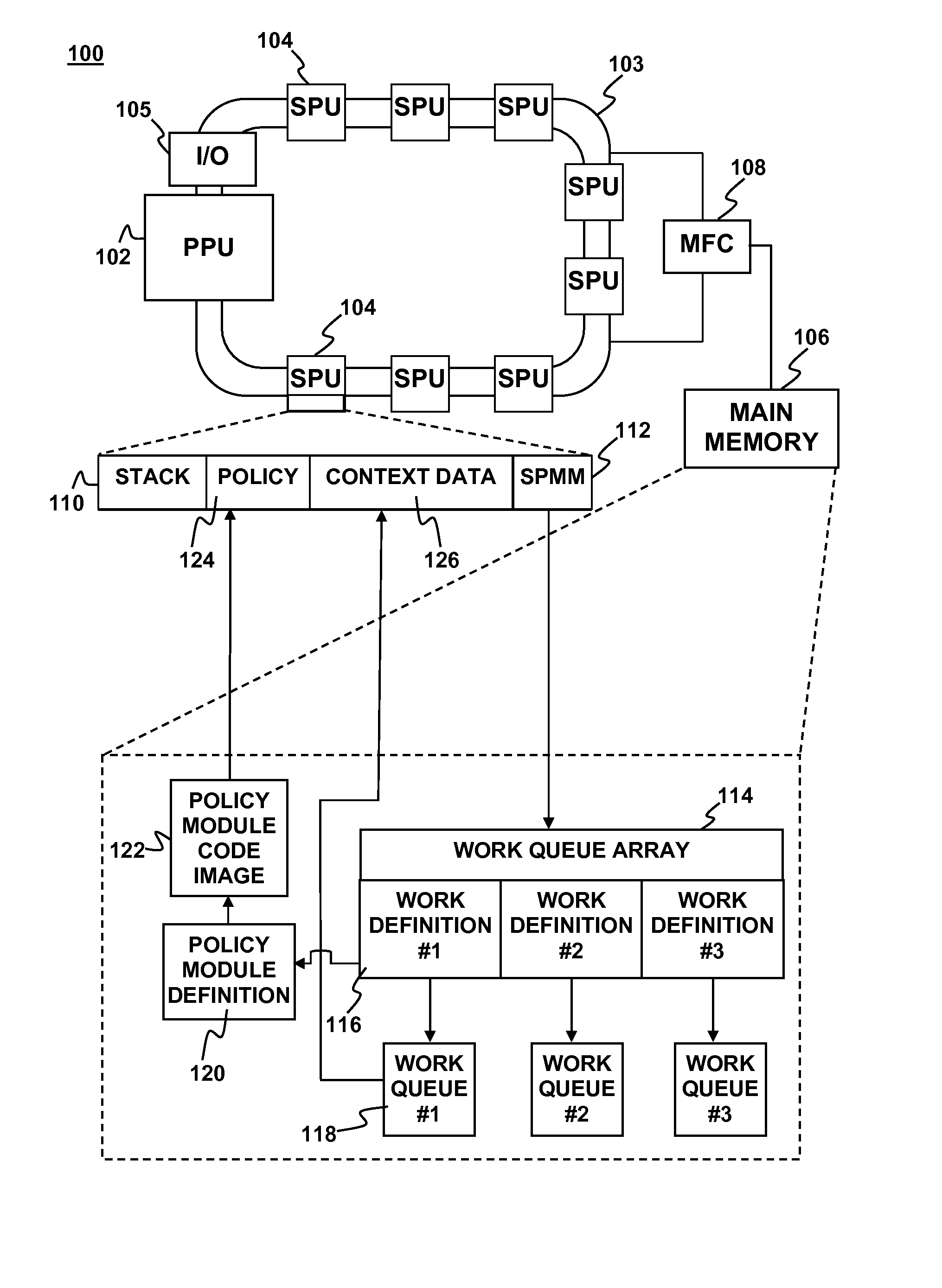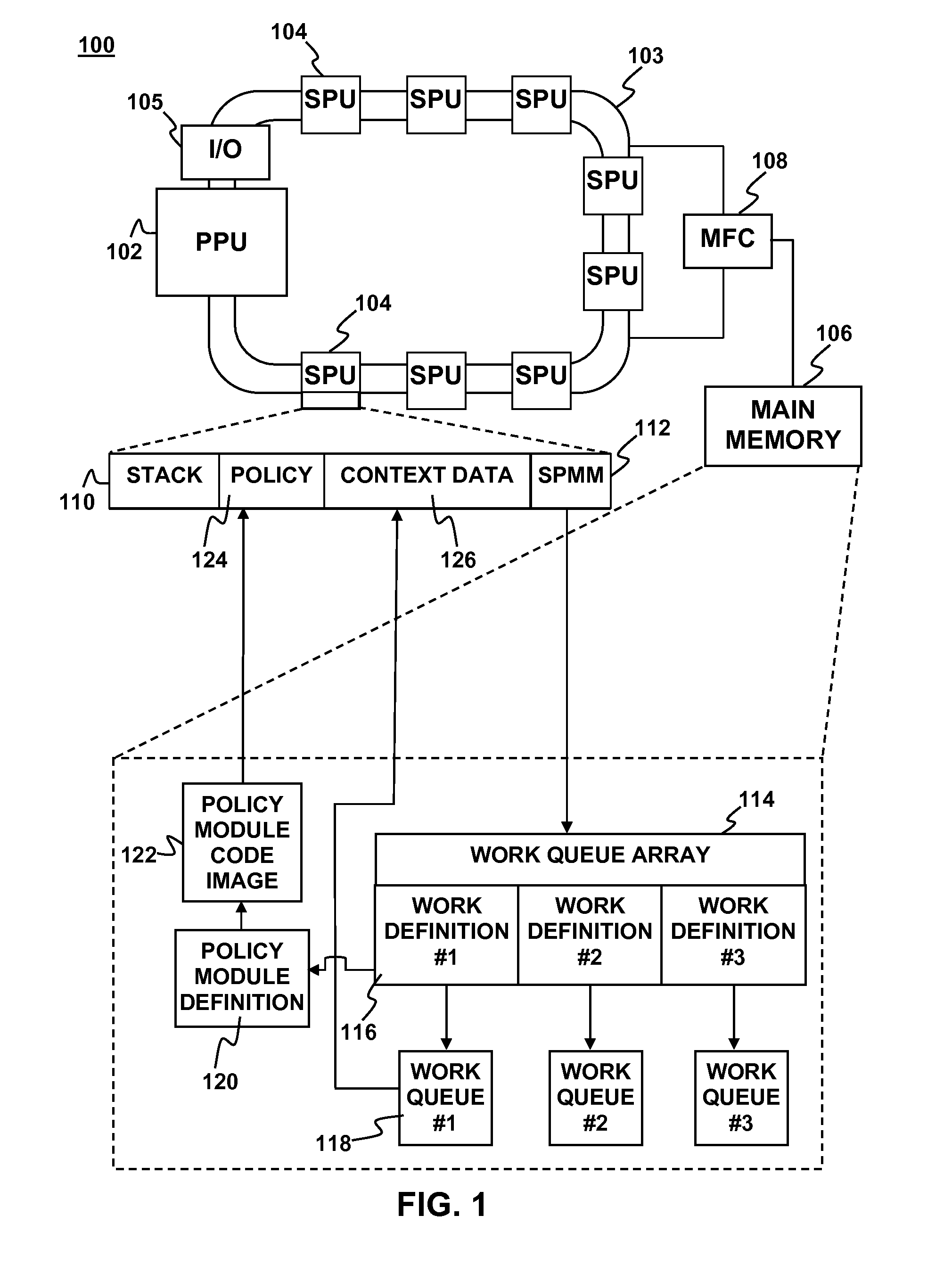Cell processor methods and apparatus
a cell processor and processor technology, applied in the field of parallel processing, can solve the problems of not being able to use spu threads in high-performance applications, not being able to choose a single task system for all applications, and being unable to interoperate with spu threads
- Summary
- Abstract
- Description
- Claims
- Application Information
AI Technical Summary
Problems solved by technology
Method used
Image
Examples
Embodiment Construction
[0024] Although the following detailed description contains many specific details for the purposes of illustration, anyone of ordinary skill in the art will appreciate that many variations and alterations to the following details are within the scope of the invention. Accordingly, the exemplary embodiments of the invention described below are set forth without any loss of generality to, and without imposing limitations upon, the claimed invention. FIG. 1 is a schematic depiction of a cell processor 100. According to an embodiment of the present invention, the cell processor 100 generally includes a power processor unit (PPU) 102 and several synergistic processing units (SPU) 104. In FIG. 1, a single PPU 102 and eight SPU 104 are shown for the sake of example. Cell processors having two or more PPU and a greater or lesser number of SPU may be used in conjunction with embodiments of the present invention.
[0025] The PPU 102 acts as a controller for the SPUs 104, which handle most of t...
PUM
 Login to View More
Login to View More Abstract
Description
Claims
Application Information
 Login to View More
Login to View More - R&D
- Intellectual Property
- Life Sciences
- Materials
- Tech Scout
- Unparalleled Data Quality
- Higher Quality Content
- 60% Fewer Hallucinations
Browse by: Latest US Patents, China's latest patents, Technical Efficacy Thesaurus, Application Domain, Technology Topic, Popular Technical Reports.
© 2025 PatSnap. All rights reserved.Legal|Privacy policy|Modern Slavery Act Transparency Statement|Sitemap|About US| Contact US: help@patsnap.com



